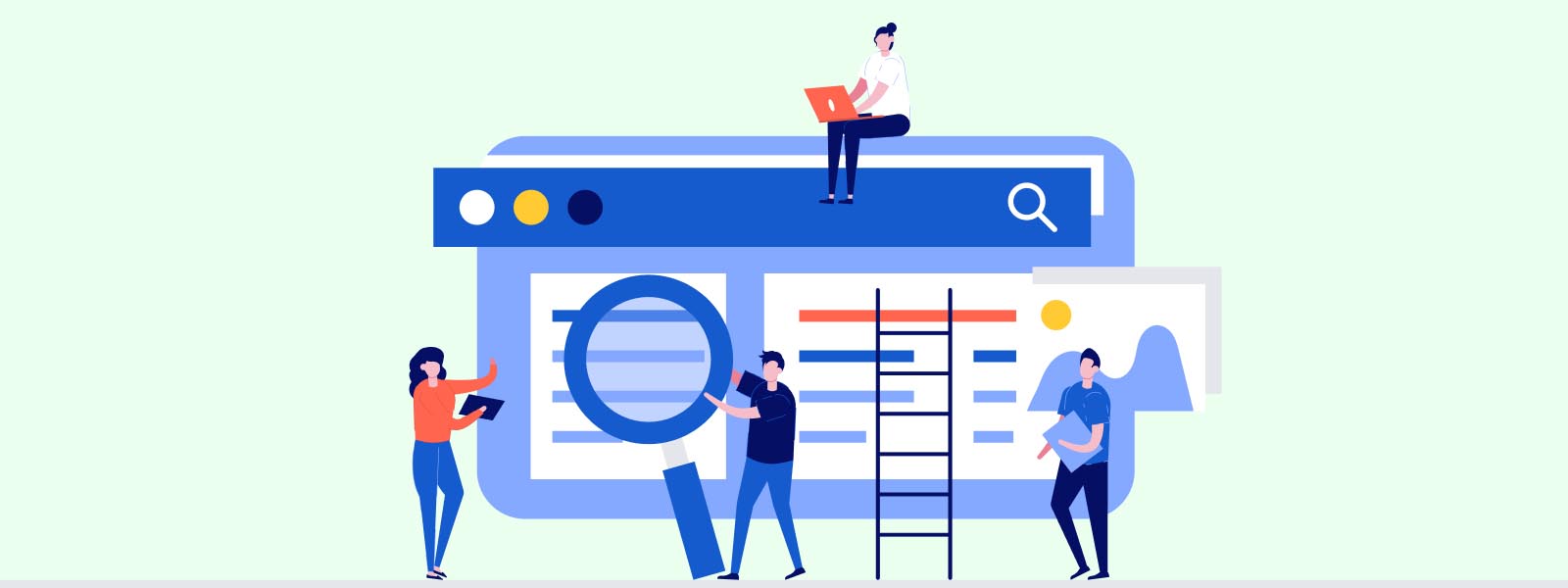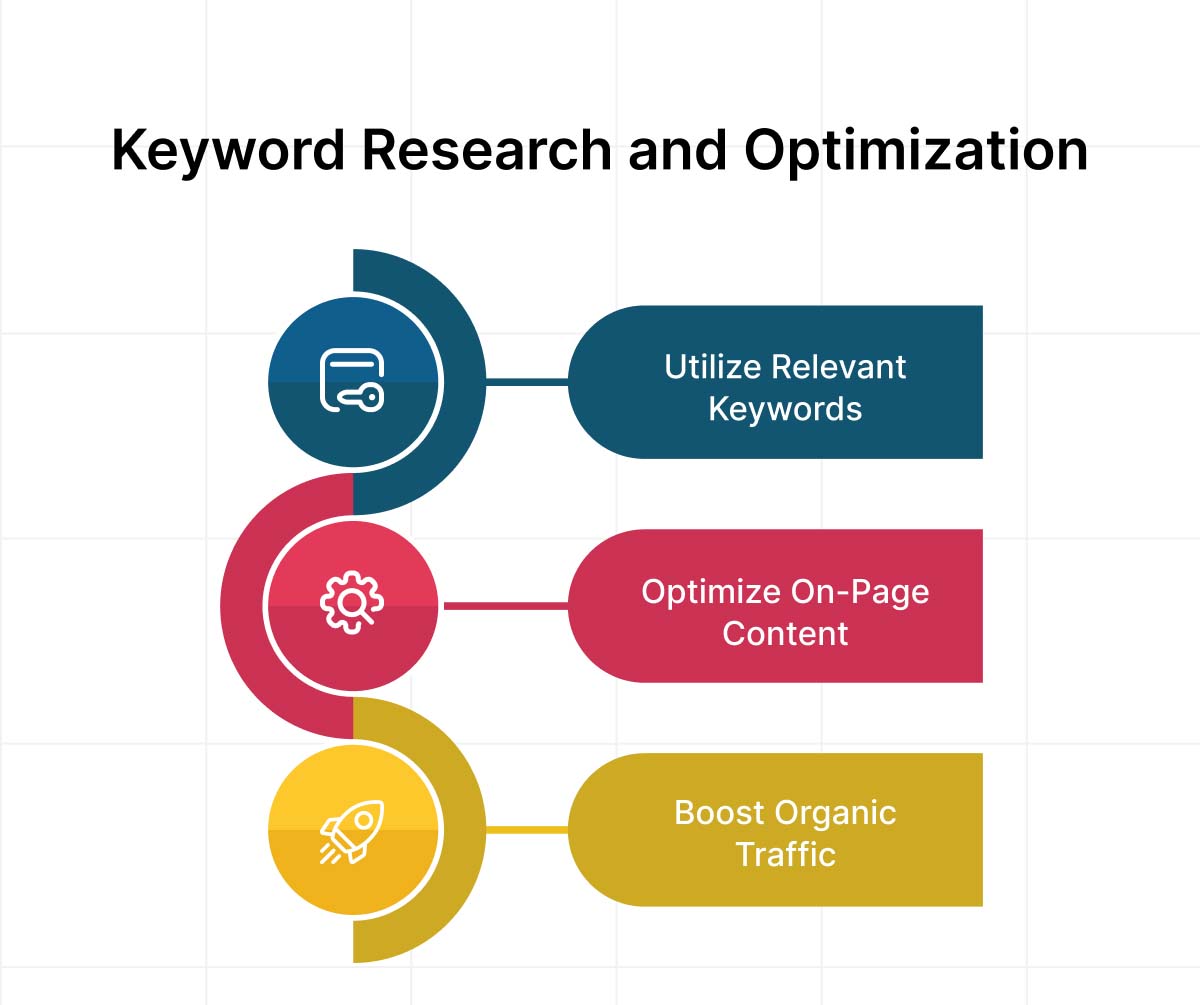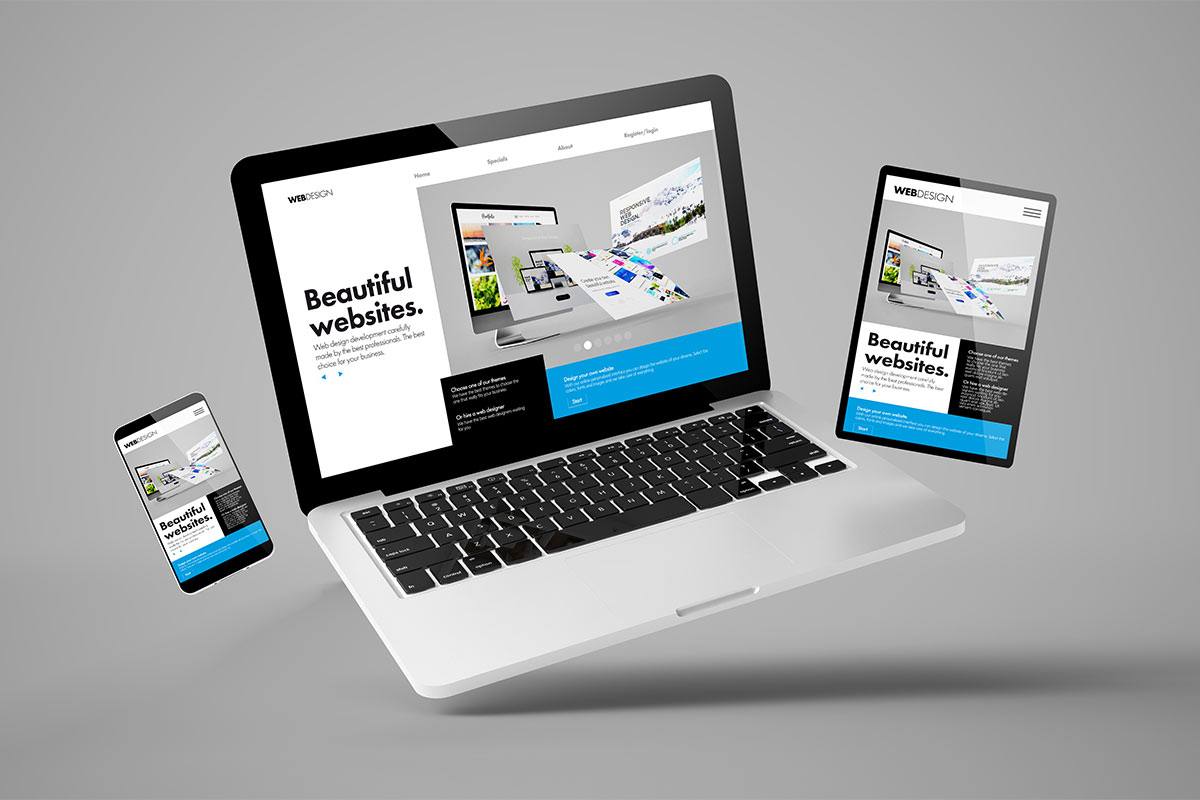 SAAS
SAAS

26 November, 2023

Have you ever wondered what makes certain websites shine while others linger in the shadows? Well, you’re in for a treat. We’re about to unveil the secrets to mastering how to optimize a website with ever-green techniques that will make your digital space truly stand out.
A website can not only be an attention grabber but also keep visitors coming back for more. How? By understanding the power of optimization. No, you’re not going to face some complicated tech jargon. This box is weighing in on practical, actionable strategies that anyone, yes, even you, can carry.
Ready for the ride? Let’s kick things off with a sneak peek into what’s coming your way.
Ever felt like your website is lost in the vast online jungle? Optimization is your compass, guiding users straight to your computerized doorstep. Whether you’re a blogger, entrepreneur, or just someone passionate about a cause, these techniques are your key to being seen and heard.
Let’s dive into the maze and don’t worry; you got us to solve the puzzle for you. Trust me; by the end of this blog, you’ll feel like you have all the magic spells you need!
Alright, website warriors, let’s delve into the meaty part of our optimization journey – the Ever-Green Techniques. These are not just quick fixes; they’re the tried-and-true strategies that will keep your website flourishing in the long run.
Buckle up for a rollercoaster ride of tips and tricks that will transform your marks online.

Welcome to the heartbeat of website optimization, all of it starts from keyword research and optimization. This isn’t just about tossing around words; it’s about strategically placing the right ones to make your site visible.
First things first, to utilize relevant keywords for higher search rankings, you need to understand your audience intimately.
Suppose you’re a fitness blogger targeting the keyword “home workouts.” Consider the variations your user base might use, like “at-home exercises” or “indoor fitness routines.”
By strategically placing keywords that align with what people are searching for, you are making your site becoming a go-to destination. Users searching for “effective home workouts” are more likely to stumble upon your site.
Now that you’ve gathered your keywords, it’s time to seamlessly integrate them into your content. Let’s say your primary keyword is “website optimization.” To optimize on-page content, ensure this keyword is in your title and headers, and naturally dispersed throughout the text.
For instance, in a blog about website optimization, your title could be “Mastering Website Optimization: A Digital Symphony,” where “website optimization” is the central theme, resonating across your headers and content.
This is the very place to talk about strategy. Think of your electronic platform as a well-mapped city with strategic routes leading traffic to different corners. Consider your primary keyword as the main avenue guiding users through your virtual city.
For example, if your keyword is “digital marketing strategies,” strategically place it in your meta descriptions, image alt texts, and even within your URLs.
Users navigating through your website are seamlessly guided by strategically placed keywords. If someone is looking for “innovative digital marketing techniques,” your strategically placed keyword signals to search engines that your content is precisely what they’re looking for.
Step into the realm where your electronic asset becomes the hero – Content Quality and Relevance. Crafting meaningful content goes beyond placing words on a page; it’s about creating a narrative that captivates, informs, and resonates with your audience.
Embark on the essence of quality content: engagement, information, and relevance. Create engaging content by considering your writing style, tone, and the value you bring to your readers.
For instance, if your blog revolves around “innovative digital marketing techniques,” make sure your content sparks a conversation through relatable examples, storytelling, and perhaps a touch of humor.
Your site visitors seek information that aligns with their needs and interests. Address the latest trends in digital marketing, using current events, case studies, and real-world examples.
To maintain a consistent posting schedule, establish a rhythm that suits both you and your user base. If you’re publishing weekly, stick to it. Consistency builds anticipation, and your clientele will come to rely on your dependable presence in their online feeds.
Think of yourself as the host of a weekly gathering where your guests get a front-row seat to the latest insights and trends in digital marketing. By consistently delivering valuable content, you establish yourself as a reliable source.
Encouraging user interaction and social sharing is like opening the doors to a vibrant computerized community. Visualize your blog as a virtual coffee shop where readers not only consume but actively participate. Encourage comments, ask questions, and create polls to spark engagement.
For instance, if your blog discusses “effective social media strategies,” prompt your audience to share their experiences or opinions on social platforms.
Now, we’re entering the era of on-the-go browsing – Mobile Optimization. It encompasses ensuring a seamless and enjoyable user experience for those navigating your electronic space on their smartphones and tablets.

Visualize your website as a flexible performer on a computerized stage, adapting effortlessly to different screen sizes. To ensure responsive design for mobile users, consider how your content appears on various devices.
Responsive design ensures that whether your audience is on a desktop, tablet, or smartphone, your web entity’s layout adjusts seamlessly, offering a consistent and user-friendly experience.
For instance, a user is searching for “quick home workouts” on their smartphone. With responsive design, your website’s layout adjusts, presenting it with easy-to-read content and clear navigation.
Your online hub needs to affirm your audience’s ability to reach their information without delays. To improve site speed and mobile user experience, optimize images, reduce unnecessary scripts, and streamline your electronic platform’s code.
Slow-loading pages can turn visitors away, so ensure your online hub loads quickly, especially on mobile devices.
Let’s say a user is searching for “healthy recipes” on their tablet while waiting for a train. If your website loads swiftly and provides a seamless experience, they’re more likely to explore multiple pages, increasing their engagement.
Optimize for mobile search results by understanding how search engines crawl and index mobile content. This involves creating a mobile sitemap, ensuring mobile-friendly URLs, and providing clear metadata.
When someone searches for “best travel apps” on their smartphone, optimized content increases the chances of your website appearing prominently in the search results.
Envision your online hub as a well-marked trail in the internet-driven forest. By optimizing for mobile search results, you’re ensuring that people looking for specific information find your web entity easily.
Welcome to the chapter where your electronic platform transforms into a high-speed racer – Site Speed and Performance. It’s not just about having a website; it’s about ensuring it loads swiftly, delivering an exceptional user experience and leaving a lasting impression.
Visualize your website as a high-speed expressway, ensuring people reach their desired destination without unnecessary delays. To minimize page load times, optimize elements like images, scripts, and code.
Consider these elements as the gears of your digital engine – when they function smoothly, your online hub becomes a swift, efficient vehicle.
For instance, think of a user looking for “quick home workouts.” If your electronic platform loads rapidly, providing instant access to valuable content, it’s akin to a high-speed expressway leading users to their fitness destination seamlessly.
Imagine your web entity as a multimedia art gallery. To optimize images and multimedia elements is to curate this gallery, ensuring each piece adds value without compromising performance.
Compress images without sacrificing quality, and streamline multimedia content for a buffer-free experience. For example, consider a user exploring your site for “inspirational podcasts.” With optimized multimedia, your website becomes an immersive audio gallery.
Now, let’s ensure your electronic platform isn’t a pitstop but a destination. By reducing bounce rates, you keep users engaged and exploring. Imagine a visitor searching for “digital marketing trends.”
If your site loads quickly, provides valuable insights, and encourages further exploration, it reduces the likelihood of interactors bouncing away.
Improved site speed isn’t just about user satisfaction; it’s a signal to search engines that your site is worthy of attention. As engagers linger, exploring different corners of your internet-driven space, search engines take note, boosting your SEO rankings.
Step into the world where your website becomes an easily navigable city – User-Friendly Navigation. It involves having content and safeguarding navigators effortlessly exploring, discovering, and enjoying the wealth of information you provide.
Imagine your website as a well-organized library. To streamline website navigation is to create a clear path, guiding seekers to their desired knowledge. Ensure menus are intuitive, categories are well-defined, and users can easily access the content they seek.
For example, a user interested in “latest tech trends” should effortlessly navigate through your hi-tech library, finding relevant categories and topics like “innovations,” “gadgets,” or “future tech.”
Now, let’s design the roadmap of your techno city. Implement clear and intuitive menus and links that act as signposts, guiding explorers through the various districts of your web entity.
Think of your menus as street signs, ensuring navigators can quickly locate and access the information they desire.
For instance, a user exploring your site for “travel guides” should encounter a navigation system that seamlessly directs them to categories like “destinations,” “tips,” and “adventure stories.”
User-friendly navigation isn’t just about getting from point A to B; it’s about creating an enjoyable journey. Enhance user satisfaction by ensuring users find what they’re looking for without frustration.
As navigators effortlessly traverse your techno city, they’re more likely to linger, explore, and return for future visits.
Imagine a first-time visitor interested in “healthy recipes.” A user-friendly navigation experience ensures they find the desired recipes quickly and discover related content like “nutrition tips” or “meal prep ideas.”
Welcome to the strategy that elevates your website’s authority – Effective Link Building. It centers on having content strategically connecting with other cyber realms and solidifying your position as a trustworthy source of information.
Think of your electronic platform as a valuable destination in the online highway. To build high-quality backlinks is to create well-traveled roads leading from other authoritative sites to yours. Seek out partnerships with reputable sources, contribute guest posts, or collaborate on projects to earn backlinks.
For instance, imagine a tech blogger aiming to establish authority on “emerging technologies.” A backlink from a renowned tech publication is like a commendation from a respected colleague, signaling to both users and search engines that your electronic asset is noteworthy.
Effective link-building is not just about quantity; it’s about quality. Network with authoritative websites to strengthen your computerized alliances. Imagine your electronic platform as a reputable library; associating with other esteemed libraries enriches your collection and enhances your trustworthiness.
For example, a user seeking insights on “digital marketing strategies” is more likely to trust your content if it includes references or links from established industry leaders or reputable marketing publications.
Now, let’s ascend the ranks in the search engine hierarchy. As you build high-quality backlinks and network with authoritative sites, your website’s authority grows. This enhances your reputation in the online community and elevates your search rankings.
Picture your online hub as a prominent building in the digital cityscape. Effective link building ensures your building stands tall, and visible from various corners of the internet.
As search engines recognize these connections, your virtual abode’s authority becomes a beacon, attracting both interactors and favorable search rankings.

Where presence is mandatory, visuals speak volumes. This optimization involves the procedure starting from adding images and videos to ensuring these elements enhance your content. It ends up engaging your guests and contributes to an immersive cybernetic experience.
Imagine your electronic assets as a captivating story. To enhance it with high-quality and relevant visuals, add vivid illustrations that bring your narrative to life. Select images and multimedia that not only complement your text but also resonate with your viewer’s preferences and interests.
For instance, if your content revolves around “home decor ideas,” incorporating high-quality images of well-designed interiors or step-by-step DIY (Do-It-Yourself) videos ensures your visitors are not just reading but visually experiencing your insights.
Now, let’s make sure your visuals don’t slow down the show. Optimize file sizes for faster loading times, ensuring your audience experiences seamless and immediate visual gratification.
Think of your visuals as actors on a stage; their entrance should be swift, captivating the audience without any unnecessary delays.
For example, a user interested in “travel destination guides” expects swift access to captivating images. By optimizing file sizes, you ensure these visuals load quickly, captivating visitors and encouraging further exploration.
Your visuals should tell a story even to those who can’t see them. Implement descriptive alt texts for accessibility, providing a narrative for screen readers and search engines.
Imagine your content as an inclusive gathering; descriptive alt texts ensure everyone, regardless of ability, can participate and engage.
For instance, if your electronic assets revolve around “healthy recipes,” descriptive alt texts for images convey not just visuals but essential information, making your data accessible to a broader audience.
Step into the fortress that safeguards your internet-driven realm – Security and SSL Certification. It focuses on a secure environment where people can trust, interact, and transact without fear of digital threats.
Imagine your website as a fortified castle. To secure it with an SSL certificate is to raise impenetrable walls. They can safeguard sensitive information exchanged between your site and its visitors.
Think of SSL as the guardian that ensures data, like personal details or financial transactions, remains confidential and encrypted.
For instance, if your online hub involves e-commerce and users input sensitive information like credit card details, an SSL certificate guarantees a secure transaction environment, earning the trust of your visitors.
Security is about defense and actively thwarting potential threats at a time. Protect your virtual abode against cyber threats and vulnerabilities by regularly updating software, using robust firewalls, and employing secure coding practices.
Consider your web entity as a digital fortress with layers of protection, deterring malicious entities from even attempting to breach.
For example, a user exploring your site for “online banking tips” expects a secure environment. By safeguarding against cyber threats, you reassure people that their financial insights and personal details are shielded within your digital fortress.
Beyond technicality, security claims to be a trust-building strategy. Build trust with visitors through secure practices, assuring them that their journey within your website is protected.
Think of your electronic platform as a reliable ally, implementing security measures that demonstrate your commitment to user safety.
For instance, if your site focuses on “investment strategies,” visitors are more likely to trust your financial insights when they perceive your website as a secure space free from potential cyber threats.

Welcome to the grand stage where your content takes the spotlight – Content Promotion and Social Sharing. Creating content turns into ensuring it reaches the right audience, captivates their attention, and sparks a digital conversation.
Imagine your electronic assets as a grand performance. To strategically promote it across platforms is to ensure it resonates with your target audience on various web-driven stages.
Consider each platform as a unique theater; tailor your promotion strategy to fit the expectations and preferences of users on each.
For example, if your cyber repertoire revolves around “travel adventures,” promote it on Instagram with visually appealing snapshots, on LinkedIn with insightful articles, and on Twitter with concise, engaging snippets.
Having social media as a tool means getting a vast arena where your content can shine. Leverage social media for maximum reach, tapping into the vast audiences each platform offers.
Think of your content as a captivating story; social media platforms are the channels through which your narrative can echo far and wide.
For instance, a user interested in “tech innovations” might stumble upon your cyber repertoire through a friend’s share on Facebook, a trending hashtag on Twitter, or a visually appealing infographic on Pinterest.
When you name this content promotion as a monologue, it’s already been a web-based conversation. Encourage user participation and engagement by creating content that sparks discussions and prompts reactions.
Imagine your content as an interactive performance; each like, share, or comment is applause from your digital audience.
For example, a user exploring your cyber repertoire on “entrepreneurship tips” may be prompted to share their own experiences on LinkedIn, sparking a vibrant discussion that extends the reach of your insights.
The adoption rate of new technology can vary significantly depending on various factors such as the type of technology, its complexity, its perceived value, cost, ease of use, and the target market.
It’s time to step into the frontier where innovation shapes your streamlined business. It leads your web entity toward embracing and incorporating cutting-edge technologies that elevate your user experience and keep it ahead of the curve.
Imagine your electronic platform as a laboratory of possibilities. To integrate emerging technologies is to infuse this laboratory with the latest innovations that enhance user experience. Consider each technology as a tool that can reshape and elevate how your audience interacts with your digital space.
For instance, if your website focuses on “virtual experiences,” consider integrating augmented reality (AR) elements that allow users to explore destinations or products.
Stagnation isn’t an option in the ever-evolving web-driven landscape. Stay informed and responsive to technological trends is a certificate that validates your virtual abode evolving alongside the latest innovations.
Think of your web entity as a dynamic entity that adapts and integrates new technologies seamlessly, providing your site visitors with a futuristic vibe.
For example, a user interested in “smart home devices” expects insights on the latest technologies. By staying informed and integrating content on emerging trends like Internet of Things (IoT) devices, your electronic platform becomes a go-to resource for tech enthusiasts.
When it comes to adoption, fostering understanding is a must as well as implementing it. Educate your readership on the benefits of new technologies, presenting them not as mere features but as valuable tools.
Think of your website as an educational hub, providing insights that empower your audience to embrace and make the most of emerging technologies.
For example, if your content revolves around “blockchain applications,” educate your readers on transparency, security, and efficiency. These are the benefits offered by blockchain technology, transforming it from a buzzword to a valuable asset.
If you want the long journey short, then knowing how to optimize a website refers to having three master keys. The first one is crafting engaging content, the second is maintaining responsive design, and the final key is fortifying with security measures.
Remember having a website is another term for a resource that can engage in interactive actions. Start looking for the very keywords your audience is typing when you are in deep sleep. Say the spells that have already been installed in your brain! The magic of optimization will be unleashed in turn.